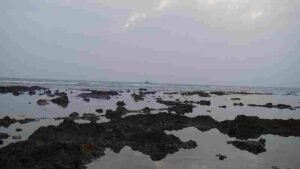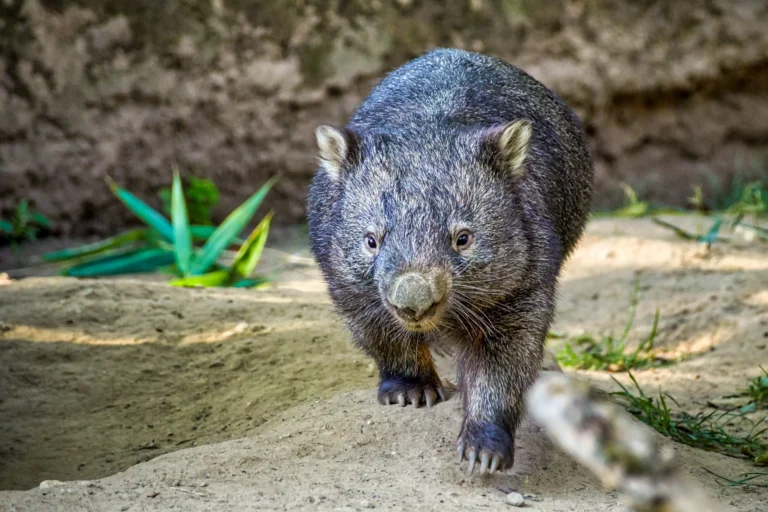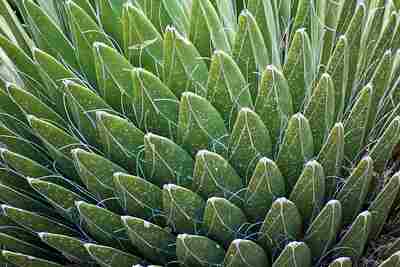7 Intertidal Zone Abiotic Factors and Their Functions
Intertidal zone abiotic factors are; light, water, dissolved oxygen, sediments, rocks, physicochemical parameters, and topography.
This article discusses intertidal zone abiotic factors and their functions, as follows;
1). Light in the Intertidal Zone (as one of the Intertidal Zone Abiotic Factors)
Light has a critical function as an abiotic component in the intertidal zone, as it helps to establish and maintain the ecological dynamics of this distinctive habitat.
In spite of the challenging conditions posed by tidal and wave influences, light availability is essential for the organisms that inhabit the intertidal zone.
This section explores the functions of light energy in the intertidal ecosystem, and addresses the question of its availability.
Functions of Light in the Intertidal Zone
Functions of light in the intertidal zone are; photosynthesis, habitat zonation, temperature regulation, behavioral influence, and synchronization of biological events.
Light is the primary energy resource for photosynthesis; which is the process by which autotrophic organisms, such as seagrasses and algae, convert light energy into chemical stored energy, in the form of biomass/organic compounds (sugars) [5].
These primary producers make-up the basal level of the intertidal food chain and provide both energy and nutrients for the heterotrophic components of the ecosystem.
Availability of light influences the distribution of organisms that are found within the intertidal zone. Some of these species are adapted to tolerate solar prolonged exposure during low tide, while others thrive in shaded or submerged areas during high tide.
Light energy gradients along the intertidal topographic gradient, create distinct zones with unique assemblages of species.
Temperature in the intertidal zone is significantly impacted by light exposure. This is because visible light from the sun is accompanied by infrared radiation that contains thermal energy [10].
With ample sunlight, temperatures can increase sharply, thereby creating warm microclimates. On the other hand, shaded areas may remain cooler due to the obstruction of solar rays. These spatial temperature variations influence the physiology and behavior of intertidal organisms.
The presence or absence of light can impact the activity patterns of both intertidal predators and their prey. For instance, nocturnal predators may become more active in low-light conditions, while diurnal species take advantage of daylight for hunting.
In the same vein, light intensity and availability are both synchronized with patterns of biological activity in the intertidal zone. Light cues, such as changes in the duration of daylight, influence the timing of reproductive events as well as migrations in many intertidal species. This synchronization is critical for the survival and reproductive success of these organisms, which in turn determine the sustainability of intertidal environments.
Availability of Light in the Intertidal Zone
There is light in the intertidal zone, and its instantaneous intensity can be influenced by multiple factors.
At low tide, when this zone is fully exposed to the atmosphere, organisms experience the full spectrum of daylight.
The intensity and duration of light exposure can vary based on factors such as the angle of the sun, cloud cover, and the presence of shading structures like rocks or algae.
2). Water in the Intertidal Zone
Water is a fundamental abiotic factor in the intertidal zone, especially for its contributions to the ecology of this dynamic coastal habitat.
As an abiotic factor, it is subject to regular and dramatic fluctuations mostly due to tidal activity, which make the intertidal zone a dynamic and challenging environment for the organisms that inhabit it.
The functions of water within the intertidal zone, as well as its characteristics, are discussed in this section.
Functions of Water in the Intertidal Zone
Functions and dynamics of water in the intertidal zone are; tidal fluctuations, transport of nutrients, temperature regulation, habitat diversity, and life support.
Dramatic fluctuations due to tidal influence, is a typical dynamic of water in the intertidal zone. During high tide, the intertidal environment is submerged, thereby providing aquatic animals with access to underwater habitats. At low tide, it exposes tidal pools and rocky shores, creating distinct microenvironments for species that thrive in low-tide conditions.

In the intertidal zone, water serves as a conduit or conveyance medium, for the transport of nutrients. High concentrations of nutrients can flow from the land into this zone, to nourish the diverse organisms that reside there. This influx of nutrients supports primary productivity, including the growth of aquatic plants, seaweeds, microalgae, and corals.
It can be argued that ecological thermoregulation is possible through the action of hydrological elements. Water has a moderating effect on temperature within the intertidal zone. It helps to regulate temperature extremes, preventing overheating during low tide exposure and providing insulation against extreme cold (by absorbing solar thermal energy) during high tide.
The fluctuating water levels and sedimentary moisture content within the intertidal zone, help establish diverse habitats, including rocky shores, tidal pools and sandy beaches. These habitats support a relatively-broad range of species that are adapted to different moisture and salinity levels.
Lastly, water is essential for the survival of intertidal organisms. This is because it provides the necessary medium for respiration, resource circulation, and reproduction. Many organisms within this habitat have developed specialized adaptations to cope with the challenging conditions of alternating exposure to air and water [6].
Overview of the Characteristics of Water in the Intertidal Zone
Typically, intertidal zones do not have still water, because they experience continuous fluctuations in water levels due to the ebb and flow of tides.
During high tide, the intertidal zone is submerged, while during low tide, it is exposed to the air, establishing a dynamic and ever-changing environment.
Intertidal zones can have water that is rich in nutrients. This richness is often influenced by in situ weathering, terrestrial runoff, precipitation, and river flows that translocate nutrients from the land into the coastal areas. These nutrients support high levels/rates of primary productivity and contribute to the overall biodiversity of the intertidal zone.
3). Dissolved Oxygen in the Intertidal Zone (as one of the Intertidal Zone Abiotic Factors)
Dissolved oxygen (DO) is a critical abiotic component of the intertidal zone, as it significantly influences the ecological dynamics and the survival rates of the organisms inhabiting this coastal habitat.
This section discusses the functions of dissolved oxygen in the intertidal zone, and address enquiries related to oxygen levels and tides.
Functions of Dissolved Oxygen in the Intertidal Zone
In the intertidal zone, dissolved oxygen contributes to organic respiration, habitat quality, food web sustenance, and ecosystem health.
Respiration of aquatic organisms in the intertidal zone, depends on dissolved oxygen as an essential factor. Several organisms, including fish, mollusks and crustaceans, rely on dissolved oxygen to drive the metabolic processes that extract energy from their food.
DO levels can be analyzed as a key indicator of habitat quality within the intertidal zone. Adequate concentrations of oxygen are critical for the survival and reproduction of various species. On the other hand, low DO levels can lead to stress and mortality among sensitive organisms; and negatively influence the aquatic food chain.
Dissolved oxygen is itself a fundamental component of the intertidal food chain. Primary producers, such as phytoplankton and algae, release oxygen through photosynthesis, which is then utilized by herbivores, omnivores and carnivores further up the food chain.
The overall vitality of the intertidal ecosystem can be assessed by monitoring DO levels. Drastic fluctuations or consistently low DO levels can be indicative of environmental stressors or pollution, which can negatively affect the ecosystem.
Dynamics and Tidal Influences of Dissolved Oxygen in the Intertidal Zone
Oxygen levels change in the intertidal zone due to several factors including solar heating, salinity variations, and tides.
During daylight hours, intense sunlight can heat tidal pools, and cause water to evaporate. As the water evaporates, dissolved salts become more concentrated, leading to a rise in salinity.
Because warmer water is less capable of holding dissolved gases like oxygen [7], solar heating results in decreased oxygen content. On the other hand, tidal influxes can help replenish oxygen by bringing in oxygen-rich seawater during high tide.
Tides have a direct impact on dissolved oxygen concentration in the intertidal zone. During high tide, oxygen-rich seawater is introduced into rocky crevices and tidal pools, increasing DO levels. As the tide recedes during low tide, these areas can become exposed and isolated, so that dissolved oxygen levels may decrease due to reduced water exchange. The timing as well as frequency of tides, play a key role in maintaining suitable oxygen concentrations.
Dissolved oxygen in seawater has a concentration that typically ranges between 7 and 8 milligrams per liter (mg/L). Organisms that thrive within the intertidal zone are generally adapted to this concentration range. However, if DO levels fall below 4 mg/L, it can become stressful for organisms, usually leading them to migrate from the affected area.
4). Sediments in the Intertidal Zone
Sediments within the intertidal zone are crucial in their role as abiotic components, as they help establish and maintain the physical and ecological characteristics of this dynamic environment.
Some of the functions of these sediments are discussed below.
Functions of Sediments in the Intertidal Zone
Functions of sediments in the intertidal zone are; habitat formation, nutrient cycling, biodiversity support, and influence on physical processes.
Intertidal sediments establish usable habitats for a wide range of organisms, including worms, sand dollars, clams, and various species of burrowing organisms [4]. These sediments offer protection and shelter from waves, extreme temperature fluctuations, and predators.

Sediments act as natural repositories for nutrients and organic matter. They provide a suitable substrate for the growth of microorganisms that facilitate biodegradation of organic material, and release essential nutrients back into the ecosystem.
This nutrient recycling trend supports primary producers like kelps and seagrasses.
Because of the availability of nutrients, intertidal sediments are also rich in biodiversity, supporting diverse microbial and macroscopic communities of both flora and fauna. The different sediment types, from sandy to clayey categories, provide various niches for species, thereby contributing to overall species diversity of the ecosystem.
Physical processes are influenced by sediments within the intertidal zone, including weathering, erosion, sediment transport, and deposition. Coarse sediments and parent-rock masses help to dissipate wave energy, thereby mitigating coastal erosion and providing stability to the shoreline.
Overview of Intertidal Sediments and Their Determinants
Intertidal sediments are materials formed through the breakdown of rocks and accumulation of mineral particles, along with organic matter found in the intertidal zone. These sediments typically range in texture from sandy to silty and clayey [2], depending on factors such as energy levels, parent rock type, and proximity of the intertidal zone to source areas.
As implied above, several factors determine the nature of sediments in the intertidal zone; including hydrological energy levels, parent rock type, proximity to source areas, as well as tides and water flow dynamics.
Sediment type/composition is influenced by the energy levels within the intertidal environment. Sandy sediments are more prevalent in areas that have higher wave energy, while muddy sediments are dominant in quieter, sheltered areas.
Another factors that can affect grain size is the distance to source areas, where sediments are generated and transported. Closer proximity to source areas typically results in coarser sediments due to shorter distance of transport and duration/intensity of weathering.
The movement of waves, tides, and wind-driven flow, plays a role in sediment transport and sorting, thereby influencing the composition of sediments.
5). Rocks in the Intertidal Zone (as one of the Intertidal Zone Abiotic Factors)
Rocks occurring within the intertidal zone are fundamental abiotic components that exert significant influence upon the physical structure and ecological functioning of this ecosystem. This section discusses the functions of intertidal rocks, and address enquiries about the rocky intertidal zone.
Functions of Rocks in the Intertidal Zone
Rocks in the intertidal zone serve as substrate for attachment, tools for habitat formation, erosion mitigation, algal growth, and biodiversity support.
Intertidal rocks provide a solid substrate for various organisms, such as mussels, barnacles, and algae, to anchor and attach themselves [3]. This attachment enables the organisms to withstand the dynamic forces of tides and waves.
Habitat formation can also be attributed to rocks in coastal marine environments. The crevices and surfaces of intertidal rocks create various microhabitats. These include tidepools, and sheltered spaces that offer protection from desiccation, extreme temperatures, and predation,. These microhabitats are critical for the survival of many intertidal organisms.
Intertidal rocks play a major role in protecting the shoreline from erosion that is caused by wave action. By serving as a mechanical buffer, they help dissipate wave energy and reduce the erosive impact of strong water currents.
Multiple species of algae, including colorful seaweeds, thrive on rocky surfaces in the intertidal. Algae are autotrophic primary producers and form the basal level of the intertidal food web, providing food for herbivores and other heterotrophic organisms. This means that rocks indirectly support the continuity of energy transfer in the intertidal zone.
Rocks contribute to the biodiversity of the rocky intertidal zone, through their abiotic functions (and their interactions with intertidal biotic factors). Their varied sizes, shapes, and orientations create ecological niches for a broad range of organisms, from limpets to starfish and sea anemones.
Overview and Characteristics of the Rocky Intertidal Zone
An intertidal rock is a rock mass or rocky surface, that is exposed to the atmosphere during low tide and submerged in seawater during high tide. These rocks serve as solid substrates for a multitude of intertidal organisms, and contribute immensely to the physical structure of the ecosystem.
The rocky intertidal zone is the area within the intertidal region of a coastline, that is characterized by the predominance of rocky shores. It is a dynamic environment which is subject to regular tidal fluctuations, and where organisms have adapted to the challenges of exposure to seawater and air. The rocky intertidal zone is renowned for its ecological significance and high biodiversity.
*Characteristics of the Rocky Intertidal Zone
Characteristics of the rocky intertidal zone include; alternate tidal exposure, microhabitat inclusion, significant biodiversity, wave influence, and dynamic interactions.
Organisms that live in the rocky intertidal zone are adapted to tolerate alternating exposures to air and seawater as a result of tidal fluctuations.
Multiple microhabitats occupy the zone, having formed in rock crevices, sheltered areas, seagrass meadows, algal mats or kelp beds, each supporting specific communities of organisms.
In many cases, the rocky intertidal zone hosts a rich diversity of marine life, especially in low latitude or tropical areas [1], with numerous species of micro and macro-algae, invertebrates, and seasonal fish (which are present usually in high tide).
Wave action is also major factor, as it influences the distribution and adaptation of organisms within this zone. The rocky intertidal zone is characterized by complex ecological interactions, including competition, predation, and symbiosis, which contribute to its uniqueness.
6). Physicochemical Parameters in the Intertidal Zone
Physicochemical parameters in the intertidal zone are essential abiotic components which play a critical role in establishing and sustaining the instantaneous conditions and long-term health of this ecosystem.
The functions of physicochemical parameters are discussed in this sections, as well as their importance.
Key Physicochemical Parameters in the Intertidal Zone
Key physicochemical parameters in the intertidal zone are; temperature, pH, salinity, dissolved oxygen, and biological oxygen demand (BOD).
Temperature influences metabolic rates, reproductive cycles, and species distribution of intertidal organisms. Fluctuations in regional temperature can be significant due to exposure to atmospheric conditions and sunlight during low tide.
pH levels affect the solubility of minerals in water, and the availability of nutrients. Many organisms inhabiting the intertidal zone have specific pH tolerances, so that fluctuations can impact their physiology and behavior.
Salinity, which is simply the concentration of dissolved salts in water, varies with tides and stormwater influx. It significantly affects osmoregulation in marine organisms, and influences both their distribution and survival.
Availability of dissolved oxygen is a critical metric for respiration and survival in aquatic organisms. Intertidal zones are subject to variations in oxygen levels due to tidal exposure and changes in both temperature and salinity.
Biological Oxygen Demand (BOD), measures the amount of oxygen that consumed by microorganisms during the decomposition of organic matter [11]. High BOD levels can lead to severe oxygen depletion, which in turn affects the health of the ecosystem.
Lastly, the type, composition and characteristics of the substrate, whether rocky, sandy, or clayey, influence the attachment, feeding, and shelter of intertidal organisms.
Functions of Physicochemical Parameters in the Intertidal Zone
Functions of physicochemical parameters in the intertidal zone include contributions to ecosystem health, species distribution, biotic interactions, reproduction, growth, nutrient cycling, organic adaptation and tolerance.
Monitoring physicochemical parameters is helpful to assess the overall vitality of the intertidal ecosystem. Deviations from normal physicochemical ranges, can indicate water pollution or other environmental impacts that affect organisms.
The suitability of microhabitats for different species can be evaluated using physicochemical parameters. This is because organisms are adapted to specific ranges of temperature, pH and salinity, that influence their distribution in the intertidal zone.
Biotic interactions occurring between organisms are impacted by physicochemical conditions [9]. For instance, dissolved oxygen levels can affect predator-prey dynamics, competition and resource allocation, among species.
Salinity and temperature variations affect the reproductive timing, as well as larval development trend of many intertidal species. Suitable conditions are essential for successful organic reproduction and recruitment.
Physicochemical parameters like salinity and pH, affect the availability and cycling of nutrients within the intertidal ecosystem. As a result, these parameters notably influence the growth of primary producers like macroalgae, which establish the foundation of the aquatic food web.
Lastly, physicochemical parameters drive adaptation, tolerance and resilience in intertidal organisms. Species have evolved specific physiological mechanisms that enable them cope with the challenging conditions of this environment.
Reasons Why Physicochemical Parameters are Important in Intertidal Regions
Physicochemical parameters of water are important for several reasons, including their use in ecosystem assessment, species monitoring, environmental protection, and analysis of human-induced impact.
They can be utilized as indicators of environmental quality, enabling scientists to assess the vitality of ecosystems and detect potential disturbances like pollution.
These parameters also help researchers to analyze and understand the distribution, adaptive physiologies, and behavior of species in response to changing environmental conditions.
Monitoring and maintaining proper physicochemical conditions are crucial measures for preserving natural ecosystems, and ensuring their sustainability [8].
Also, the impacts of human activities on aquatic environments can be determined by studying physicochemical parameters, which may then inform conservation/regeneration efforts.
7). Topography in the Intertidal Zone (as one of the Intertidal Zone Abiotic Factors)
Topography in the intertidal zone can be described as a core abiotic component that defines several of the characteristics of this dynamic coastal ecosystem.
This section discusses the functions of topography, and addresses some key features of the intertidal zone.
Functions of Topography in the Intertidal Zone
Functions of topography in the intertidal zone are; shelter and habitat structuring, wave impact modification, areal zonation, and control of sedimentation processes.
A variety of habitats for intertidal organisms is provided by the diverse topographical features of this ecosystem, such as rocky cliffs, mudflats and sandy beaches. Each type of topographic configuration, offers different habitat-niches and shelters for various species, so that the overall topographic outlay of the intertidal zone, determines their distribution.
The gentleness or steepness of the topography, affects the exposure of the intertidal zone to wave action, as well as the trend and outcomes of this exposure. Marginal areas below rocky cliffs, for example, are more exposed and experience higher magnitudes of wave energy, which impact the types of species that can inhabit them.

Topographical variations contribute to the spatial zonation observed in the intertidal zone. Different topographical regions, including the spray zone, high, middle, and lower intertidal zones, each create distinct ecological niches. Species are adapted to specific zones on the basis of degree of exposure to the atmosphere and sea.
Within the intertidal zone, topography generates microhabitats such as temporal pools and rock crevices. These microenvironments provide protection and shelter from both predators and harsh environmental conditions.
The topography also influences the deposition and accumulation of sediments, so that it partly determines substrate type and sediment characteristics. Sediments can range from rocky substrates to sandy or clayey materials.
Overview of Features of the Intertidal Zone
Features of the intertidal zones are geo-ecological segments including spray zone, high, middle, and low intertidal zones respectively. These segments feature seasonal, hydrological, topographic, and biological differences that can be used to delineate the intertidal zone into distinct components.
The spray zone is the highest part of the intertidal zone, which often occurs above the reach of high tides, and is wetted only during high wave events or storms. Organisms that live in this zone must tolerate extreme temperature fluctuations and possible desiccation.
High intertidal zone is submerged during high tides, but exposed during low tides. As a result, it is subject to significant changes in temperature and salinity. Organisms here are therefore mostly adapted to both aquatic and terrestrial conditions.
The middle zone (or 'middle intertidal zone') is submerged and exposed for roughly equal amounts of time during regional tidal cycles. It supports a diverse community of species that are adapted to relatively-moderate environmental fluctuations.
Low intertidal zone is typically underwater, except during the lowest tides. It is therefore subject to fewer extremes in salinity, temperature and water saturation, making it suitable for a vast variety of intertidal organisms.
Importance of Topography in the Intertidal Zone
The importance of topography in the intertidal zone can be traced to its contributions to habitat diversity, erosion, sedimentation, species zonation, research and conservation. It can be observed that these are similar to factors cited under the functions of intertidal topography above. They are readdressed briefly here.
A mosaic of habitats is created by variable topography within the intertidal zone, thereby promoting biodiversity by offering multiple niches for species.
Erosion of rocks and transport/deposition of sedimentary materials, are both influenced by topography. These processes are vital to the development, of the physical landscape of the intertidal zone.
Topography contributes to the zonation of species along the intertidal gradient. These organisms are adapted to specific topographical regions, so that spatial topographic variability leads to unique organic assemblages.
Lastly, studying the topography of the intertidal zone is critical for ecological research and conservation, as it aids scientists to understand species distribution and habitat dynamics.
Conclusion
Intertidal zone abiotic factors are;
1. Light
2. Water
3. Dissolved Oxygen
4. Sediments
5. Rocks
6. Physicochemical Parameters
7. Topography
References
1). Adharini, R.; Probosunu, N.; Arifati, A.; Drastiana, T.; Rusnasari, F. C. (2020). "The diversity of intertidal fish in Sundak Beach, Yogyakarta, Indonesia, during dry and rainy seasons." E3S Web of Conferences 147(4):02020. Available at: https://doi.org/10.1051/e3sconf/202014702020. (Accessed 19 September 2023).
2). de Boer, P. L. (1998). "Intertidal sediments: composition and structure." Available at: https://www.academia.edu/402873/Intertidal_sediments_composition_and_structure. (Accessed 19 September 2023).
3). Dudgeon, S.; Petraitis, P. (2001). "Scale-Dependent Recruitment and Divergence of Intertidal Communities." Ecology 82(4):991-1006. Available at: https://doi.org/10.2307/2679898. (Accessed 19 September 2023).
4). Hallinan, R. J. (2015). "The Influence of Sediment Characteristics on the Burrowing Behavior of Ensis Directus." Available at: https://digitalcommons.library.umaine.edu/honors/238/. (Accessed 19 September 2023).
5). Larkum, A. W.; Drew, E. A.; Ralph, P. (2006). "Photosynthesis and Metabolism in Seagrasses at the Cellular Level." Available at: https://doi.org/10.1007/978-1-4020-2983-7_14. (Accessed 19 September 2023).
6). Leeuwis, R. H. J.; Gamperl, A. K. (2022). "Adaptations and Plastic Phenotypic Responses of Marine Animals to the Environmental Challenges of the High Intertidal Zone." Oceanography and Marine Biology: An Annual Review, Volume 60 (pp.625-679). Available at: https://doi.org/10.1201/9781003288602-13. (Accessed 19 September 2023).
7). Limburg, K. E.; Breitburg, D.; Swaney, D. P.; Jacinto, G. (2020). "Ocean Deoxygenation: A Primer." One Earth 2(1):24-29. Available at: https://doi.org/10.1016/j.oneear.2020.01.001. (Accessed 19 September 2023).
8). Mishra, A. P.; Kumar, S.; Patra, R.; Kumar, A.; Sahu, H.; Chandra, N.; Pande, C.; Alshehri, F. (2023). "Physicochemical Parameters of Water and Its Implications on Avifauna and Habitat Quality." Sustainability. Available at: https://doi.org/10.3390/su15129494. (Accessed 19 September 2023).
9). Noisette, F.; Hurd, C. (2018). "Abiotic and biotic interactions in the diffusive boundary layer of kelp blades create a potential refuge from ocean acidification." Functional Ecology 32(5). Available at: https://doi.org/10.1111/1365-2435.13067. (Accessed 19 September 2023).
10). Rhodes, C. J. (2010). "Solar energy: principles and possibilities." Sci Prog. 2010;93(Pt 1):37-112. Available at: https://doi.org/10.3184/003685010X12626410325807. (Accessed 19 September 2023).
11). Vigiak, O.; Grizzetti, B.; Udias, A.; Zanni, M.; Dorati, C.; Bouraoui, F.; Pistocchi, A. (2019). "Predicting biochemical oxygen demand in European freshwater bodies." The Science of The Total Environment 666. Available at: https://doi.org/10.1016/j.scitotenv.2019.02.252. (Accessed 19 September 2023).





